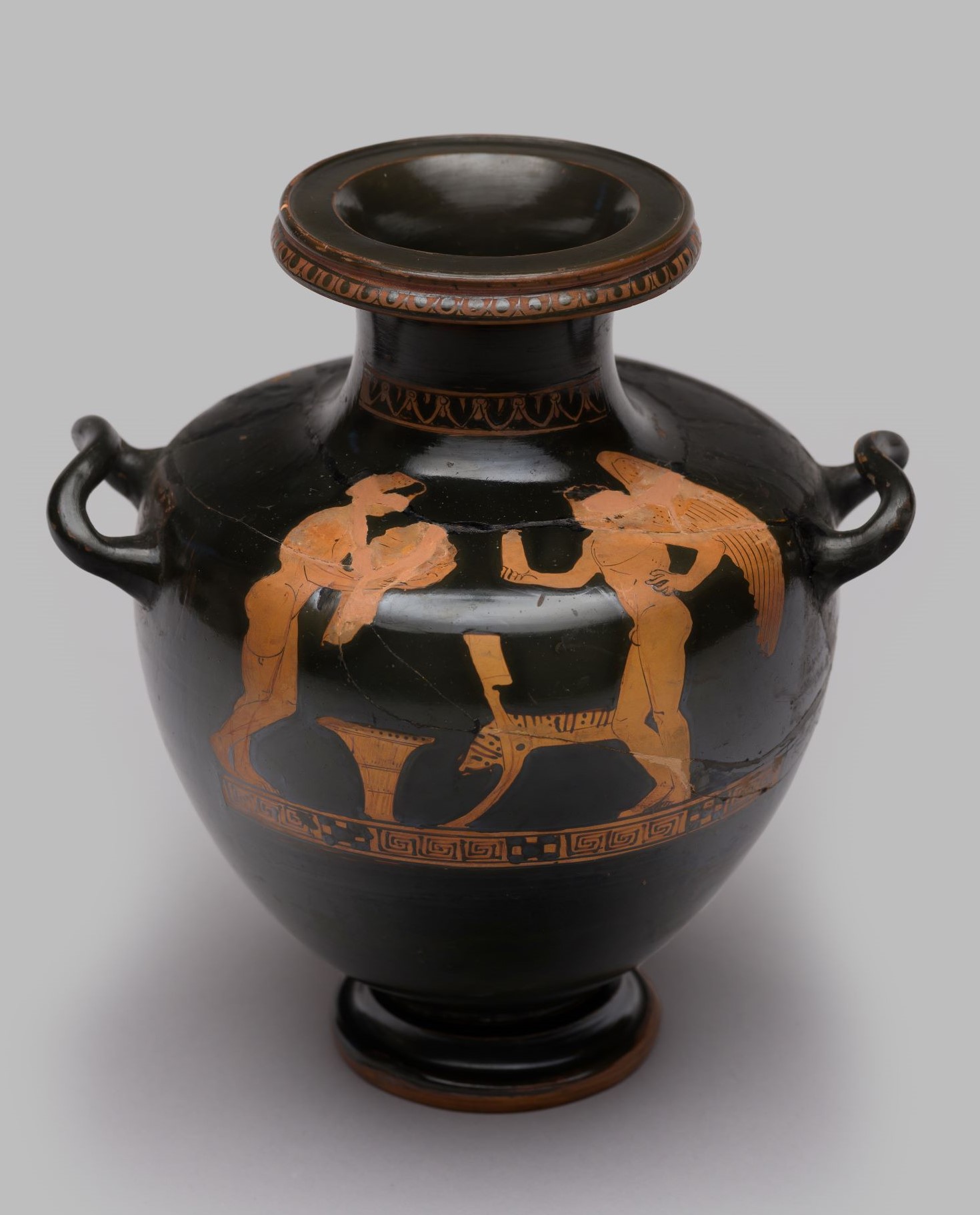
Hydria [Gr24]
Athenian Red-Figure, by the Washing Painter, 430-420 BC
Painted terracotta (h. 18.5 cm, w. 16.9 cm), mended with extensive restoration
A naked woman holding a bundle of clothes, in front of her a wool basket and a chair. On the right Eros stands naked, holding an alabastron, wearing a wreath and sandals.
The Washing Painter was one of the most prolific Athenian vase painters. More than three hundred vases have been attributed to him, including two others in Winchester’s collection (Gr26 and Gr105). Since only a small proportion of Athenian vases survive, the Washing Painter must have decorated many thousands of vases during his career. He specialised in small vases with scenes of women in domestic settings, sometimes washing themselves at a basin (hence his name). Female nudity was rare in Greek art before the late 5th century, and it was not until the 4th century that Praxiteles (395-330 BC) carved the first known depiction of a nude Greek goddess, Aphrodite of Knidos. When women were depicted nude (fully or partially) it was often in a context of violence, but here it is part of an intimate domestic scene.
This is one of a group of related vases by the Washing Painter, showing Eros (the god of physical desire) flying towards a naked woman while holding an alabastron (perfume flask). Some (possibly all) of the vases in this group were found at Nola, a Greek colony in Sicily, and they have been the subject of considerable debate. One suggestion is that they show women preparing for their wedding. Hydriai (water jars) like this one seem often to have been given as wedding gifts because fetching water from the well was an activity undertaken by the women of the household. This vase is surely too small to have been useful in carrying water, supporting the idea that it was intended as a symbolic gift.
Other historians have argued that the nudity of the women indicates that they are hetairai (prostitutes). One potentially illuminating feature of this vase’s design is the wool basket at the woman’s feet. Wool-working was an important activity for Athenian women, and the wool basket seems often to have functioned as a sign of domestic virtue, but there is evidence to suggest that prostitutes in Greek brothels earned extra income by spinning wool. Some have argued that amulets tied around the thigh – as worn by the woman on this vase – are characteristic of prostitutes.
Literature: Sian Lewis, The Athenian Woman, an iconographic handbook (London, 2002), pp. 104, 232 (n. 45); J. Falconer and T. Mannack, Corpus Vasorum Antiquorum: Great Britain, Fascicule 19: Winchester College (Oxford, 2002), p. 9, plate 8.1-3; V. Sabetai, ‘The Washing Painter: a Contribution to the Wedding and Genre Iconography of the Fifth Century B.C.’, (PhD Disseration, University of Michigan, Ann Arbor, 1994), p. 33, no. H11; J.D. Beazley, Attic Red-Figure Vase-Painters 2nd edn. (Oxford, 1963), p. 1131.159; Winchester College Memorial Buildings: Department of Classical Art (Winchester, 1909), p. 23 (no. 87)
Exhibited: Chichester District Museum, May-September 2004
Provenance: Gift of Miss Preston before 1909
Location: Treasury, Gallery 3